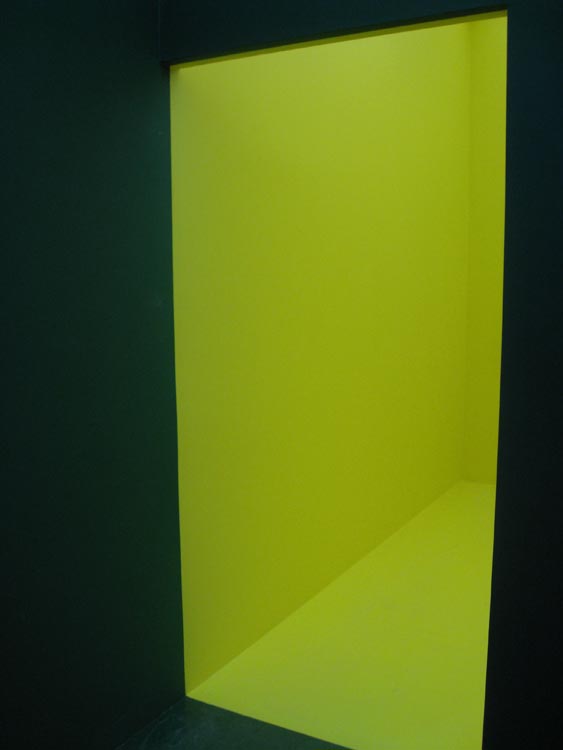Three Easy Pieces

The Arsenale, in three easy pieces:
You walk the entirety of the Arsenale hall toward a tree. Maybe it’s the tree of knowledge, who knows. When you get up close you realize it’s Ceal Floyer’s bonzai, something quite small and stunted that’s been magnified beyond its normal scale. When you get event closer, you walk in front of the rays of the projector. (ALL PHOTOS: ALEX GARTENFELD)
You can’t tell it from here because the flash on my camera was the only thing lighting the space to make the furniture and appliances visible, but Chu Yun’s room was entirely, disorientingly dark. The only light in the room (before I blinded other viewers) were small, single bulbs affixed to each surface. This is the third in Yun’s “Constellation” series, and the placard noted that each small bulb was a star in a “tiny universe.” Luckily, the movement between dark and light and Yun’s simultaneously pranoid and comforting rendering of space offered a more precise consideration of dark space, and the space of the exhibition.
Â
Cildo Mireiles Pling Pling, 2009, was a lynchpin of sorts: visitors passed through monochrome chambers with a single video screen installed in each. Each video had a bifurcation, or a zip, to roughly match the corners of the room; sometimes the screen matched the colors of the room and other times not. From each room the brightly colored entrance to the next room was visible. Admittedly, there was a lot of Donald Judd in it: Mireiles is fairly direct about the way viewers are supposed to physically approach a space, and the visual effects that result upon walking toward the walls. Nonetheless, the puns on color theory in vibrant flourescent colors and the range of views and angles afforded, and the deployment of the video, which was more than a mere meditation on the properties of media, took the piece beyond a rehearsal of Judd’s themes. In typical Arsenale form, nearby there was another series of rooms by another artist, albeit in blander colors.






